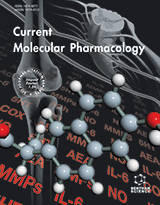Abstract
Erythropoietin (EPO), a glycoprotein essential for red blood cell production acts on several non-erythropoietic tissues. The EPO receptor (EPOR) is expressed in a variety of cell types including neurons, endothelial cells, and cardiomyocytes. Recently, a number of reports have indicated that EPO preserves heart function in models of cardiac ischemia-reperfusion (I/R) injury. A diverse range of cellular/physiological processes is modulated by EPO and are thought to play a role in the preservation of heart function. In vivo, reductions in infarct size, apoptosis, oxidative stress, and inflammation have been reported. More recently, increases in angiogenesis and reductions in arrhythmias have been implicated in the cardioprotective effects of EPO. In vitro, EPO reduces apoptosis, oxidative stress, and inflammation. These cardioprotective effects appear to be mediated by a receptor interaction that is distinct from that responsible for EPO ’ s erythropoietic effects. Downstream of receptor interactions, the activation of phosphatidylinositol-3 kinase (PI3-kinase) and Akt appear to mediate many of EPOs cardioprotective effects. However, there is emerging evidence for Akt-independent mechanisms of cardioprotection including the inhibition of glycogen synthase kinase 3β, as well as the activation of potassium channels, protein kinase C, and protein kinases such as ERK1/2. This review focuses on the effects of EPO in the heart and the molecular mechanisms by which EPO achieves its cardioprotective effects.
Keywords: Erythropoietin, cardioprotection, myocardial infarction, ischemia and reperfusion, apoptosis, nitric oxide, signal transduction, angiogenesis
Current Molecular Pharmacology
Title: Molecular Basis of Cardioprotection by Erythropoietin
Volume: 2
Author(s): D. Burger, A. Xenocostas and Q. P. Feng
Affiliation:
Keywords: Erythropoietin, cardioprotection, myocardial infarction, ischemia and reperfusion, apoptosis, nitric oxide, signal transduction, angiogenesis
Abstract: Erythropoietin (EPO), a glycoprotein essential for red blood cell production acts on several non-erythropoietic tissues. The EPO receptor (EPOR) is expressed in a variety of cell types including neurons, endothelial cells, and cardiomyocytes. Recently, a number of reports have indicated that EPO preserves heart function in models of cardiac ischemia-reperfusion (I/R) injury. A diverse range of cellular/physiological processes is modulated by EPO and are thought to play a role in the preservation of heart function. In vivo, reductions in infarct size, apoptosis, oxidative stress, and inflammation have been reported. More recently, increases in angiogenesis and reductions in arrhythmias have been implicated in the cardioprotective effects of EPO. In vitro, EPO reduces apoptosis, oxidative stress, and inflammation. These cardioprotective effects appear to be mediated by a receptor interaction that is distinct from that responsible for EPO ’ s erythropoietic effects. Downstream of receptor interactions, the activation of phosphatidylinositol-3 kinase (PI3-kinase) and Akt appear to mediate many of EPOs cardioprotective effects. However, there is emerging evidence for Akt-independent mechanisms of cardioprotection including the inhibition of glycogen synthase kinase 3β, as well as the activation of potassium channels, protein kinase C, and protein kinases such as ERK1/2. This review focuses on the effects of EPO in the heart and the molecular mechanisms by which EPO achieves its cardioprotective effects.
Export Options
About this article
Cite this article as:
Burger D., Xenocostas A. and Feng P. Q., Molecular Basis of Cardioprotection by Erythropoietin, Current Molecular Pharmacology 2009; 2 (1) . https://dx.doi.org/10.2174/1874467210902010056
| DOI https://dx.doi.org/10.2174/1874467210902010056 |
Print ISSN 1874-4672 |
| Publisher Name Bentham Science Publisher |
Online ISSN 1874-4702 |
 49
49
- Author Guidelines
- Bentham Author Support Services (BASS)
- Graphical Abstracts
- Fabricating and Stating False Information
- Research Misconduct
- Post Publication Discussions and Corrections
- Publishing Ethics and Rectitude
- Increase Visibility of Your Article
- Archiving Policies
- Peer Review Workflow
- Order Your Article Before Print
- Promote Your Article
- Manuscript Transfer Facility
- Editorial Policies
- Allegations from Whistleblowers
- Announcements
Related Articles
-
Cathinone Neurotoxicity (“The “3Ms”)
Current Neuropharmacology New Targeted Therapies for Thyroid Cancer
Current Genomics Meet Our Editorial Board Member
Current Vascular Pharmacology Coenzyme Q10 in Neuromuscular and Neurodegenerative Disorders
Current Drug Targets The Complex Biology of FOXO
Current Drug Targets Dopamine Targeting Drugs for the Treatment of Schizophrenia: Past, Present and Future
Current Topics in Medicinal Chemistry Breath Tests to Assess Alcoholic Liver Disease
Reviews on Recent Clinical Trials Endocarditis Due to Salmonella Enterica Subsp. Arizonae in a Patient with Sickle Cell Disease: A Case Report and Review of the Literature
Cardiovascular & Hematological Disorders-Drug Targets Antithrombotic Treatment in Cardiomyopathies
Current Pharmaceutical Design Editorial [Hot Topic:The Metabolic Treatment of Coronary Artery Disease and Heart Failure(Executive Editor: Pericle Di Napoli)]
Current Pharmaceutical Design INNO-206 (DOXO-EMCH), an Albumin-Binding Prodrug of Doxorubicin Under Development for Phase II Studies
Current Bioactive Compounds Epidermolysis Bullosa: Pediatric Perspectives
Current Pediatric Reviews Assessing Coronary Blood Flow Physiology in the Cardiac Catheterisation Laboratory
Current Cardiology Reviews MicroRNAs and Cardiac Conduction
Current Drug Targets Contribution of ALDH2 Polymorphism to Alcoholism-Associated Hypertension
Recent Patents on Endocrine, Metabolic & Immune Drug Discovery (Discontinued) Cardiac Biomarkers in Stroke, Alzheimer’s Disease, and Other Dementia. Are They of Use? A Brief Overview of Data from Recent Investigations
CNS & Neurological Disorders - Drug Targets Dyslipidaemia Related to Insulin Resistance and Cardiovascular Disease in South Asian and West African Populations
Current Pharmaceutical Design Beta-blockers in Intensive Care Medicine: Potential Benefit in Acute Brain Injury and Acute Respiratory Distress Syndrome
Recent Patents on Cardiovascular Drug Discovery Nerve Growth Factor: A Focus on Neuroscience and Therapy
Current Neuropharmacology microRNAs in Cardiovascular Disease: Small Molecules but Big Roles
Current Topics in Medicinal Chemistry


























